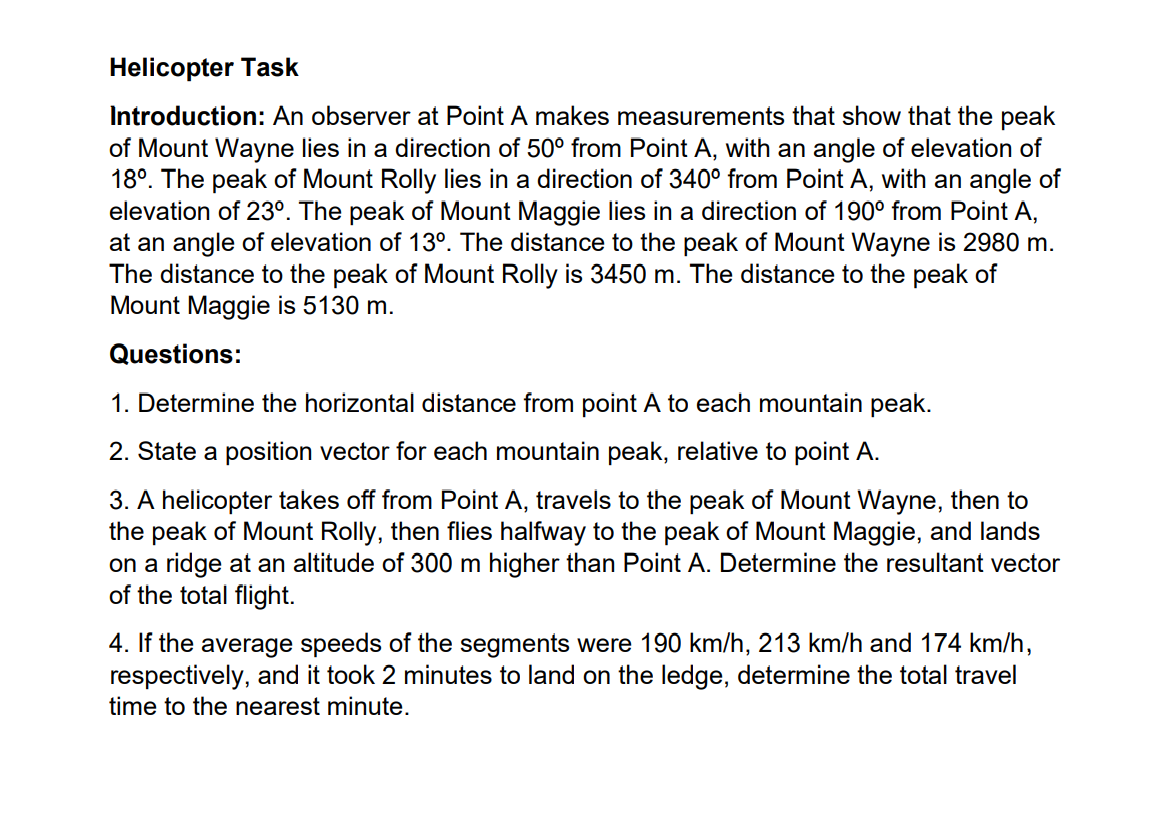Helicopter Task Introduction: An observer at Point A makes measurements that show that the peak of Mount Wayne lies in a direction of 50° from Point A, with an angle of elevation of 18°. The peak of Mount Rolly lies in a direction of 340° from Point A, with an angle of elevation of 23°. The peak of Mount Maggie lies in a direction of 190° from Point A, at an angle of elevation of 13°. The distance to the peak of Mount Wayne is 2980 m. The distance to the peak of Mount Rolly is 3450 m. The distance to the peak of Mount Maggie is 5130 m. Questions: 1. Determine the horizontal distance from point A to each mountain peak. 2. State a position vector for each mountain peak, relative to point A. 3. A helicopter takes off from Point A, travels to the peak of Mount Wayne, then to the peak of Mount Rolly, then flies halfway to the peak of Mount Maggie, and lands on a ridge at an altitude of 300 m higher than Point A. Determine the resultant vector of the total flight.
Introduction: An observer at Point A makes measurements that show that the peak
of Mount Wayne lies in a direction of 50º from Point A, with an angle of elevation of
18º. The peak of Mount Rolly lies in a direction of 340º from Point A, with an angle of
elevation of 23º. The peak of Mount Maggie lies in a direction of 190º from Point A,
at an angle of elevation of 13º. The distance to the peak of Mount Wayne is 2980 m.
The distance to the peak of Mount Rolly is 3450 m. The distance to the peak of
Mount Maggie is 5130 m.
Questions:
1. Determine the horizontal distance from point A to each mountain peak.
2. State a position
3. A helicopter takes off from Point A, travels to the peak of Mount Wayne, then to
the peak of Mount Rolly, then flies halfway to the peak of Mount Maggie, and lands
on a ridge at an altitude of 300 m higher than Point A. Determine the resultant vector
of the total flight.
4. If the average speeds of the segments were 190 km/h, 213 km/h and 174 km/h,
respectively, and it took 2 minutes to land on the ledge, determine the total travel
time to the nearest minute.

Step by step
Solved in 2 steps with 2 images









